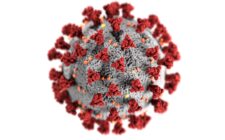What is osteoarthritis
Osteoarthritis is one of the universally seen forms of degenerative arthritis. It is the degenerative joint disease with the chronic inflammation of the joints and degenerative changes in the joint cartilages. Osteoarthritis is the condition most often seen after middle ages. It has steady phase of progression in worsening its symptoms. Still now there is no cure for osteoarthritis.
Osteoarthritis is seen with the changes in the joint cartilage and underlying bone joint surfaces making the joint stiff and painful. Most commonly occur in the weight bearing joints like knee and hip joint. Few joints in the hands and feet also affected.
Osteoarthritis also accounts for the leading cause for disability. Though osteoarthritis is incurable, the progression can be slowed down by various treatment strategies available.
Classification:
Cartilage is the main component in the joint surface to protect the friction between two bony joint surfaces. It provides frictionless movements in the joint surfaces. The main cause for osteoarthritis is the cartilage of joint surface gets ruptured or undergone degenerative changes leading to the complete wear down of cartilage and friction between bone joint surfaces increases.
The osteoarthritis is classified according to the causes:
Idiopathic or primary – the cause for primary osteoarthritis is unknown. It may be localized and generalized. Most importantly causative factor is ageing..
Secondary – this has direct cause to the osteoarthritis by traumatic, congenital, metabolic, endocrine, and neuropathic conditions.
Risk factors for osteoarthritis:
The risk factors are the main mode for causing osteoarthritis. The common risk factors are:
- Ageing – as the person ages he has the more risk in acquiring the osteoarthritis. Most commonly seen after the middle ages.
- Obesity – excess weight on the body put added stress on the weight bearing joints likely to wear the joint surfaces easily. Over weight person are five times more prone to osteoarthritis than normal person.
- Genes – certain genes are more prone to obtain osteoarthritis definitely in their life.
- Injury – some bad injury to the joints increases the risk of osteoarthritis. Mostly the sports injuries are common. Even the acute injuries develop as a chronic osteoarthritis of that joint.
- Profession or occupation -person in hard working profession put added pressure on their joints leading to osteoarthritis. The job techniques and nature of it can directly affect the joints wear and tear.
- Weak muscles – weaker the muscles around the joint easier for joint cartilage to wear out.
- Racial – African American have the high risk factor rate.
- Hormonal changes – especially in women after menopause the estrogen level drops down or go out of balance increasing the risk of osteoarthritis.
- Nutritional deficiency – deficiency of vitamins like C and D for prolonged time are most likely to cause osteoarthritis.
- Autoimmune disease – immune system affecting our own body
- Various associated diseases of the joint can increase the risk of osteoarthritis. Mainly the infectious diseases of the joints.
Most commonly seen symptoms of osteoarthritis:
The symptoms of osteoarthritis vary from person to person, some have mild and some have severe symptoms as follows
- Pain – pain is the main indicator of the problem in the joints. Pain may be continuous or alternatively vary with sharp and burning sensations. Frequent pain especially in the night time is the main indicator of osteoarthritis.
- Joint stiffness – due to cartilage wear the joint loose the frictionless properties and joint surface friction each other. This makes stiffness in the joints usually while waking up from the sleep in the morning time.
- Decreased movements – the joint surface wear and tear makes the movements more reduced by pain and stiffness. The range of motion is decreased.
- Muscle weakness – the reduction in the movements of joints makes the muscles around the joint to be weak and wasted.
- Swelling – swelling is the collection of fluid in the joint space and surroundings. Swelling indicates some kind of damage in the joints.
- Crackling sound – crackling sound is clearly heard in osteoarthritis joints. The sound felt with some pain or no pain.
How to diagnose osteoarthritis:
Physical exam:
The physical exams are very important to detect the presence of osteoarthritis.
- The joint range of motion is checked.
- Any joint clicking sound is heard in movements.
- The pain or tenderness along the joint line is tested.
X – RAY:
The x-rays show the images of the bones and joint surfaces. From x-ray doctors check for
- Any narrowing of joint space is seen.
- Any outgrowths in the bony surfaces.
- Any changes observed in the bone mass.
Blood tests:
The blood test shows the osteoarthritis and other condition present in the joints.
- Elevated level of the erythrocyte sedimentation rate shows the presence of inflammatory conditions like lupus.
- Increased antibodies presence indicates rheumatic condition association.
Synovial fluid test:
Normally synovial fluid is not sufficient to extract from the normal joints. if the fluid is taken out it is the first indicator for the presence of certain problem in joints.
- Presence of cartilage cells in the fluid shows the presence of osteoarthritis.
- Increased WBC count shows the infection present.
- For osteoarthritis the synovial fluid is checked for SULFATED GLYCOSAMINOGLYCAN, keratin sulfate and link protein levels.
MRI scans:
If the other tests fail to show obvious diagnosis of osteoarthritis then MRI scan if preferred.
Body mass index – to check for weight of the body has any impact on the joint surfaces.
How to treat osteoarthritis:
The main aim of the treatment plan is to reduce pain and joint stiffness and increase the joint motion.
Medications:
- Analgesics – it is a pain reliever prescribed by most of the doctors to relieve pain. ACETAMINOPHEN is the common analgesic used to relieve pain.
- Non steroidal anti inflammatory drugs (NSAIDs) – these drugs are responsible for relieving the pain and reducing inflammation of the joints. most common drugs are
- ASPIRIN
- IBUPROFEN
- NAPROXEN
- Corticosteroid drugs – decreases the pain, inflammation and swellings.
- Topical applications – use of the medications in the form of cream and spray applied topically on the skin to relieve pain temporarily.
- Narcotics.
Surgeries:
- Arthroscopy – this method uses a tiny tube inserted into the joint to detect the damages in the cartilage and other joint tissues. Spoiled particle is removed. It is a temporary method.
- Joint replacement surgery – this is the most commonly done surgery method. The damaged joint surface area is removed completely and replaced by new suitable artificial parts. Only in severe cases joint replacement surgeries are undergone.
- Immobilization – some joints are made immobile by use of metal or plastic screws. Used only in small tiny joints in hand and toes.
- OSTEOTOMY – this is the procedure done to rearrange or realign the bones of the joints.
- In few cases injecting the lubricants are done.
How to manage osteoarthritis:
In managing osteoarthritis exercise plan play an important role. Proper exercise program can control the joint pain and stiffness. Main exercises are strengthening exercise and stretching exercises. The strengthening exercises makes the muscles around the joints to gain strengthened. Strengthened muscles provide stability to the joints. The stretching exercise mainly improves the flexibility of the muscle and increase the joint range of motion.
Reducing weight will definitely reduce the pressure on the joints.
Try using braces to protect joints from further damages.
Implant some modification in the job nature and life style to reduce the pressure on the joints.
Maintain proper diet plan with lot of nutrients. Vitamins are more essential for the joint strength. Mostly vitamin D is important to stop the development of the osteoarthritis.
Make changes in the daily life activities.
Conclusion:
Osteoarthritis is the major concern in today`s world with movement disability. It is prevalent all over the world. Though osteoarthritis is incurable, the risk factors control and management are made possible.





